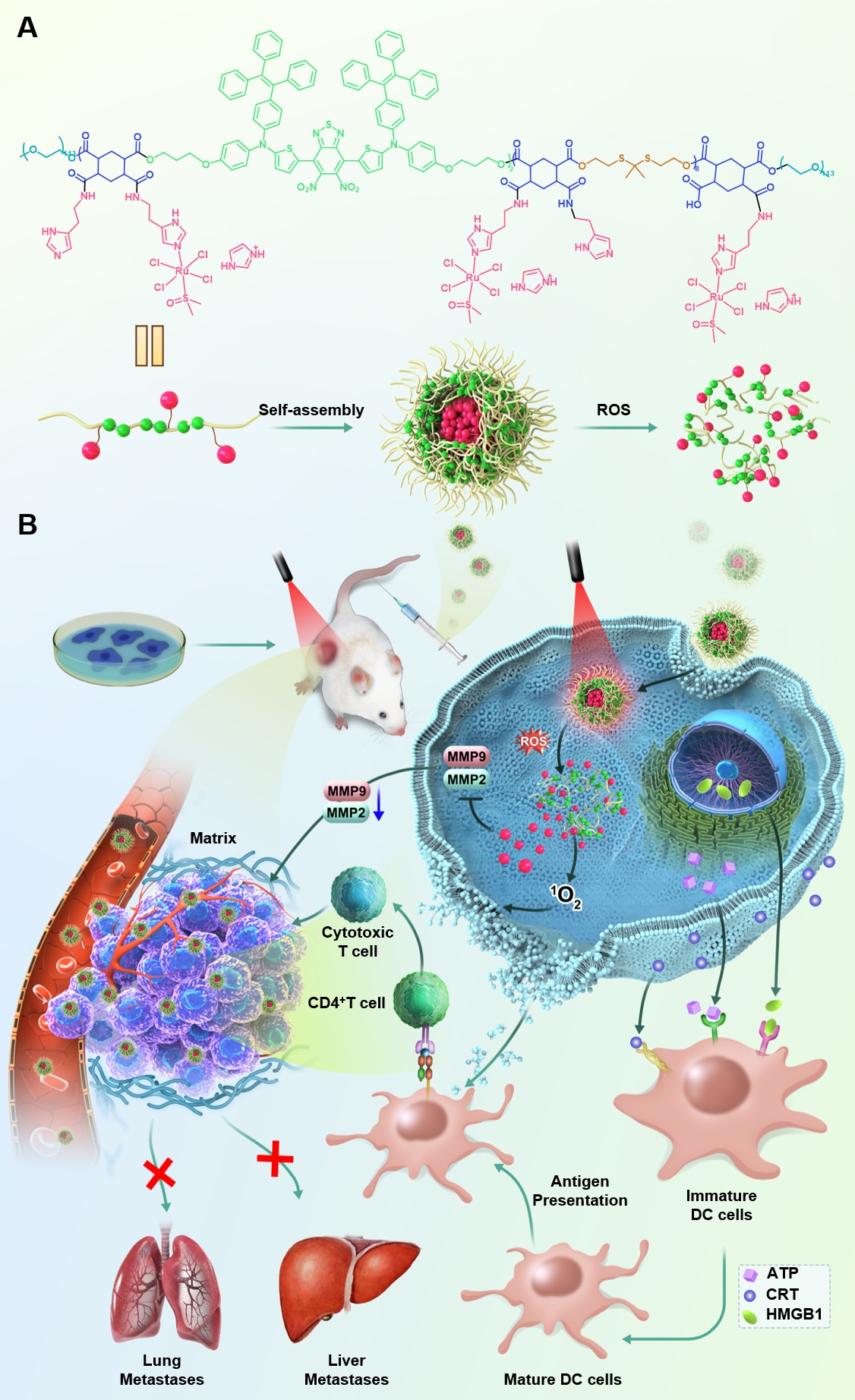Localization of Cancer Cells for Subsequent Robust Photodynamic Therapy by ROS Responsive Polymeric Nanoparticles with Anti-Metastasis Complexes NAMI-A
Hanchen Zhang, Minhui Cui, Dongsheng Tang, Bin Wang, Ganghao Liang, Chun Xu, and Haihua Xiao*
Adv.Mater. 2024, 2310298
Photodynamic therapy (PDT), as a new type of light-mediated reactive oxygen species (ROS) cancer therapy, has the advantages of high therapeutic efficiency, non-resistance, and less trauma than traditional cancer therapy such as surgery, radiotherapy, and chemotherapy. However, oxygen-dependent PDT further exacerbates tumor metastasis. To this end, a strategy that circumvents tumor metastasis to improve the therapeutic efficacy of PDT is proposed. Herein, a near-infrared light-activated photosensitive polymer is synthesized and branched the anti-metastatic ruthenium complex NAMI-A on the side, which is further assembled to form nanoparticles (NP2) for breast cancer therapy. NP2 can kill tumor cells by generating ROS under 808 nm radiation (NP2 + L), reduce the expression of matrix metalloproteinases (MMP2/9) in cancer cells, decrease the invasive and migration capacity of cancer cells, and eliminate cancer cells. Further animal experiments show that NP2 + L can inhibit tumor growth and reduce liver and lung metastases. In addition, NP2 + L can activate the immune system in mice to avoid tumor recuhhence. In conclusion, a PDT capable of both preventing tumor metastasis and precisely hitting the primary tumor to achieve effective treatment of highly metastatic cancers is developed.

文献链接:https://doi.org/10.1002/adma.202310298
